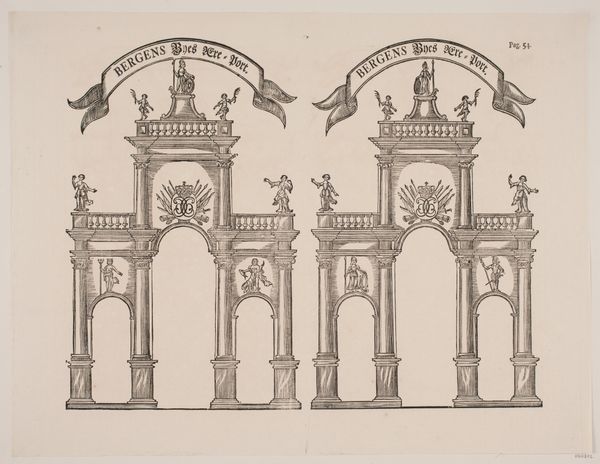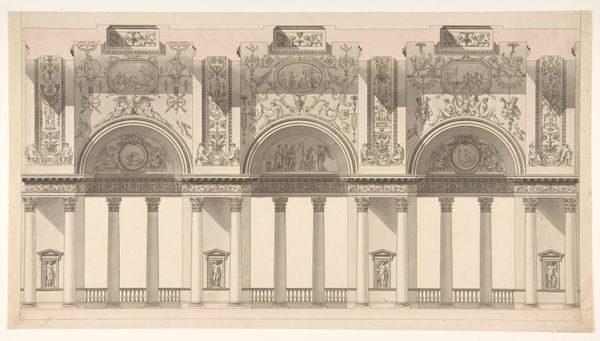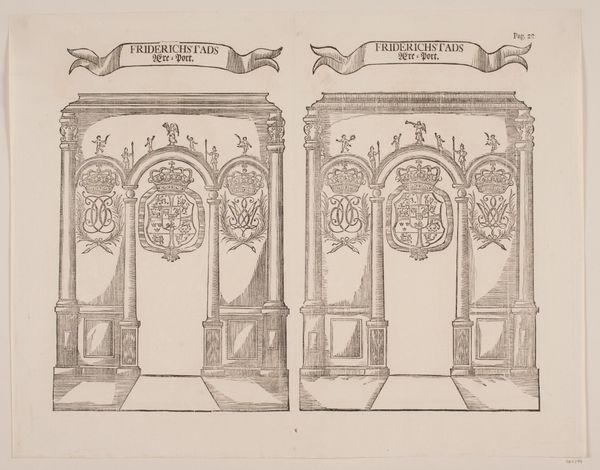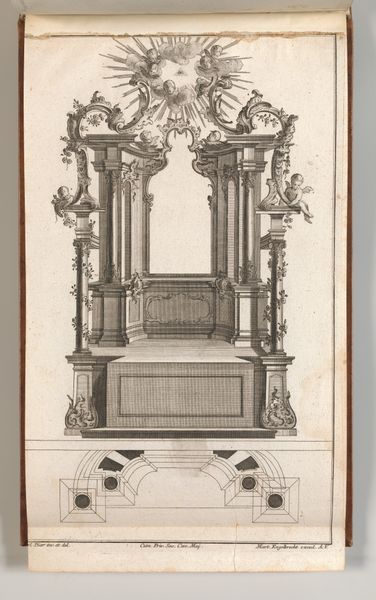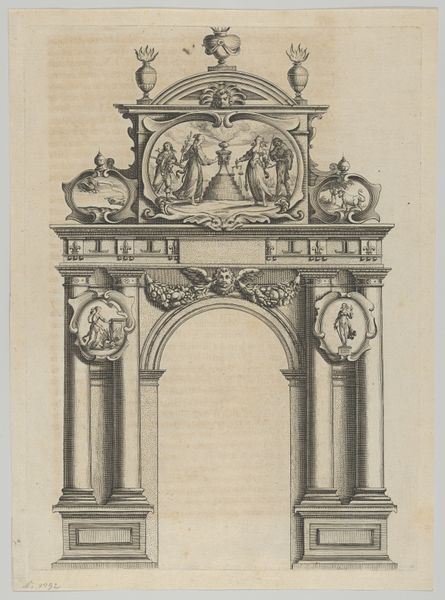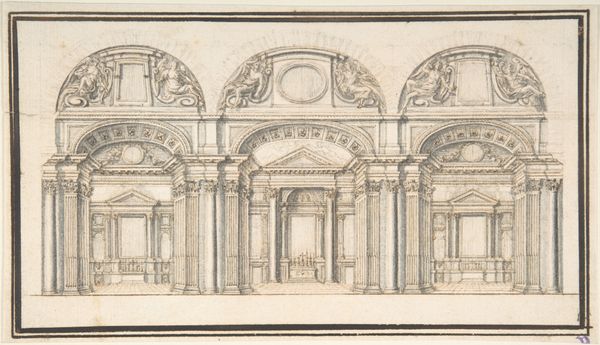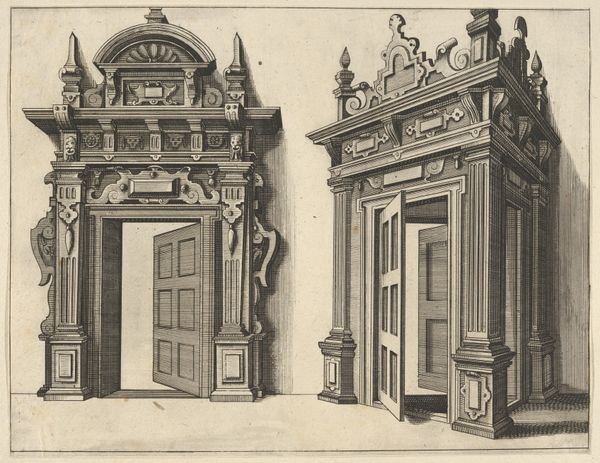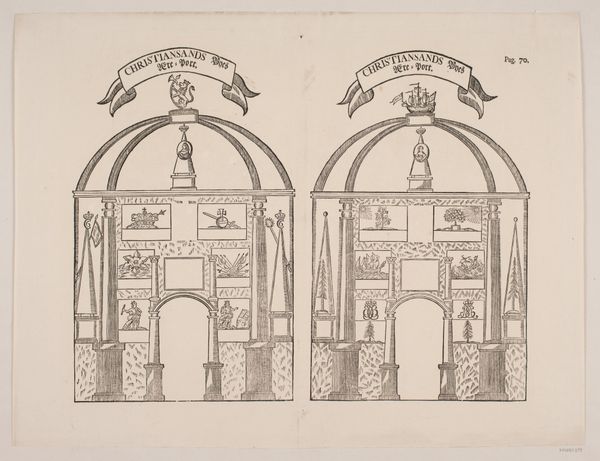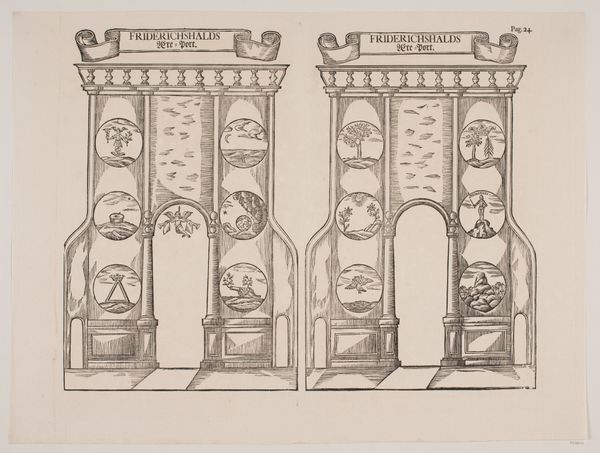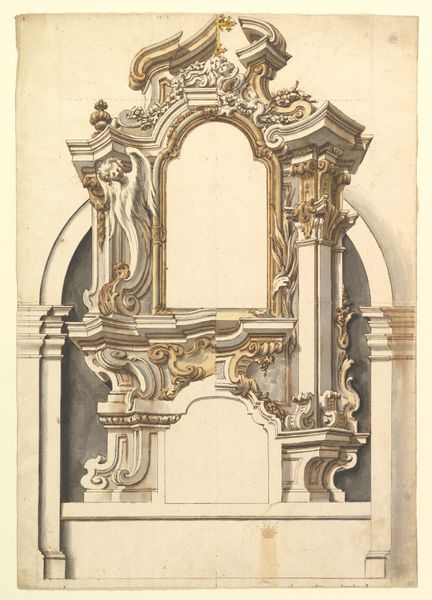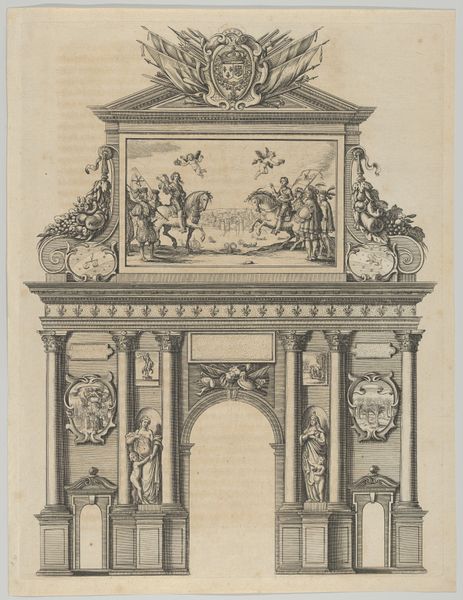
drawing, print, etching, ink, woodcut, engraving
#
drawing
#
ink drawing
#
baroque
# print
#
etching
#
etching
#
ink
#
woodcut
#
history-painting
#
engraving
Dimensions: 365 mm (height) x 476 mm (width) (bladmaal)
Editor: Here we have an 18th-century etching called "Christianias Æresport" by an anonymous artist. I’m struck by its symmetrical design, two arches mirroring each other. It feels almost like a blueprint. What do you see in this piece? Curator: Blueprints are rarely imbued with such flourish! These aren't merely structural plans, but rather echoes of celebration and power. Consider the era; this piece emerges from the Baroque period, a time when art aimed to overwhelm the senses, to inspire awe. Imagine these arches erected—monumental structures declaring triumph. I can almost hear the fanfare! Notice how each archway contains unique Latin inscriptions? What feelings do they stir within you? Editor: I see them, like little whispers! They definitely add to the formality. Is it right to see this print as propaganda? A way to glorify a specific leader? Curator: Propaganda perhaps carries too much modern weight. It is more that it expresses a desire to imprint authority on the land. Those ships depicted in medallions weren’t just sailing; they were extensions of a sovereign's reach, and reminders of international prestige. Look at the crowns sitting atop these arches – potent symbols, claiming not only earthly domain, but divinely sanctioned right. What a show! Editor: It’s fascinating how something so detailed, so deliberate, can feel both celebratory and, well, a bit cold. Almost clinical, despite its intention. Curator: That’s the paradox of power on paper, isn't it? Frozen in ink, attempting to command eternity. The triumph depicted, carefully constructed for us to witness centuries later. It prompts one to wonder about how we capture and consume these grand pronouncements today. Editor: That's such a thought-provoking point! This has really shifted my understanding of the piece. Thanks!
Comments
No comments
Be the first to comment and join the conversation on the ultimate creative platform.
